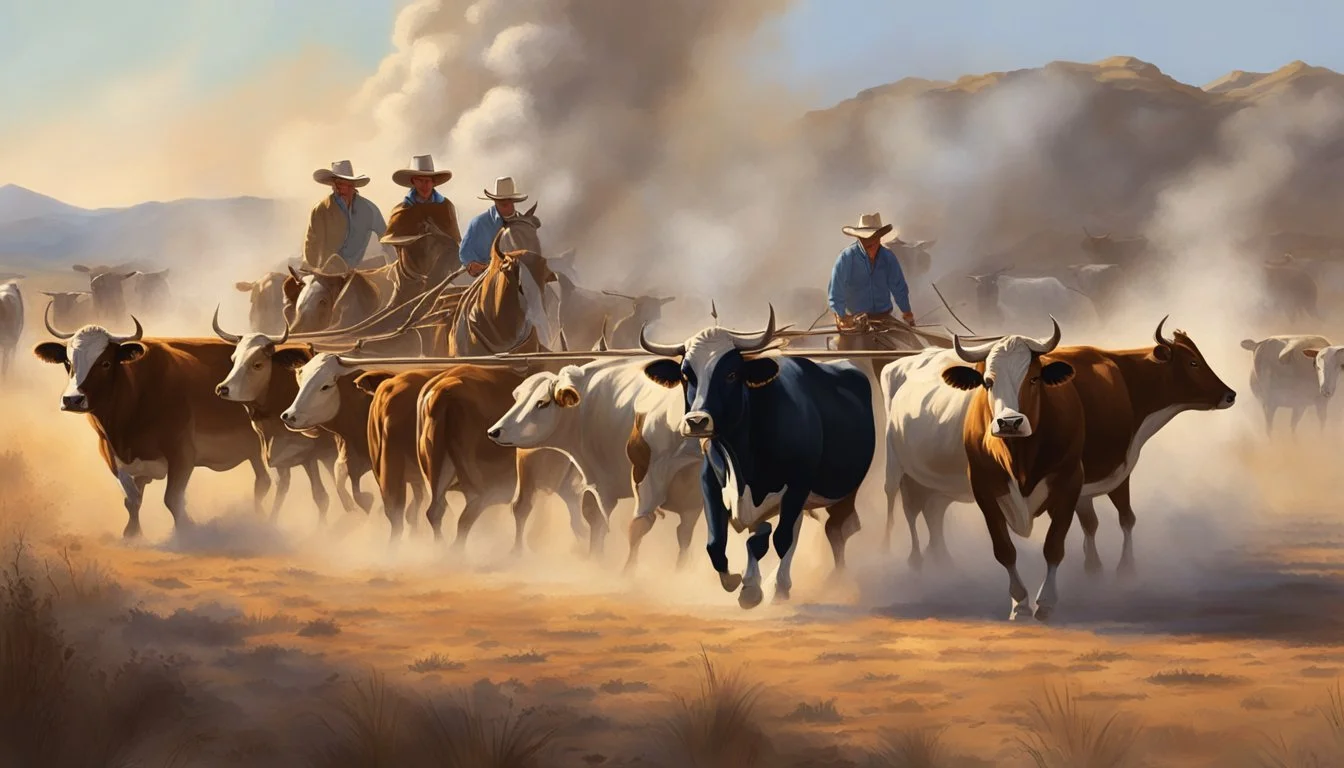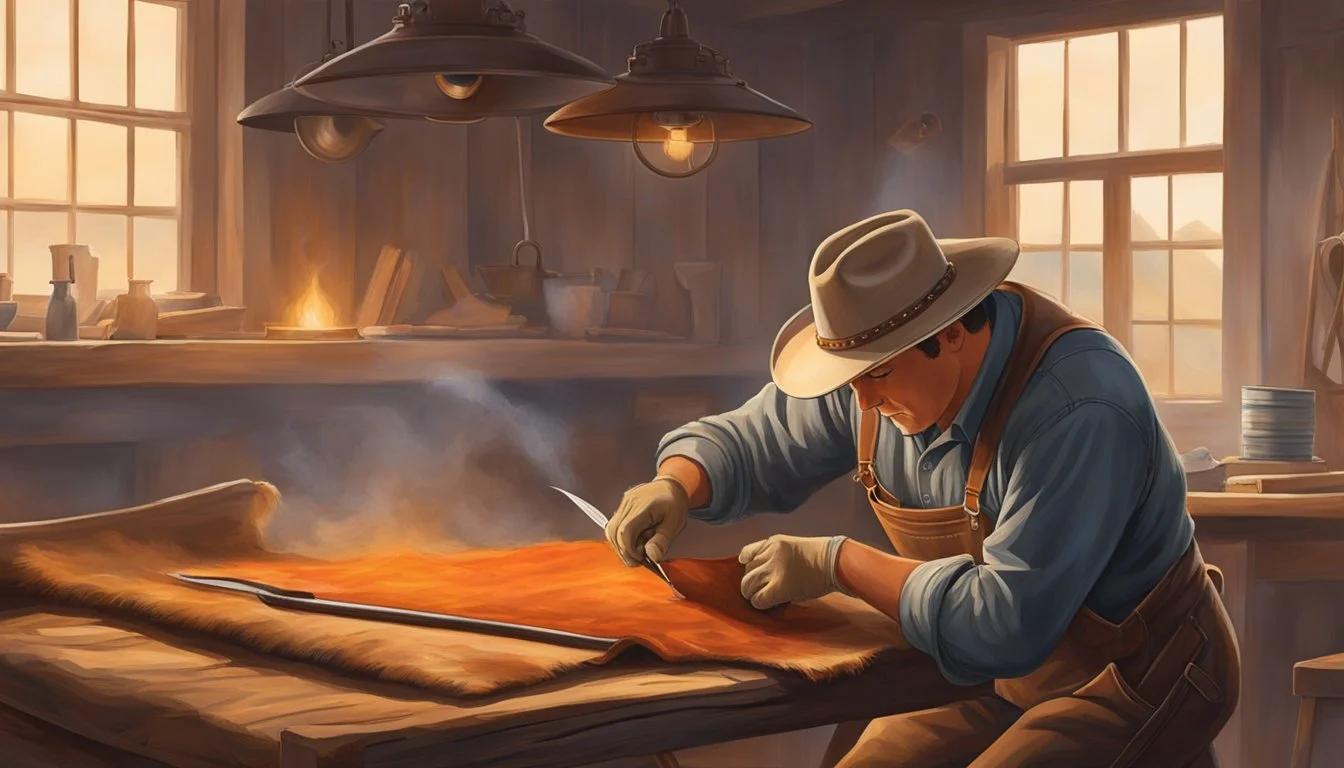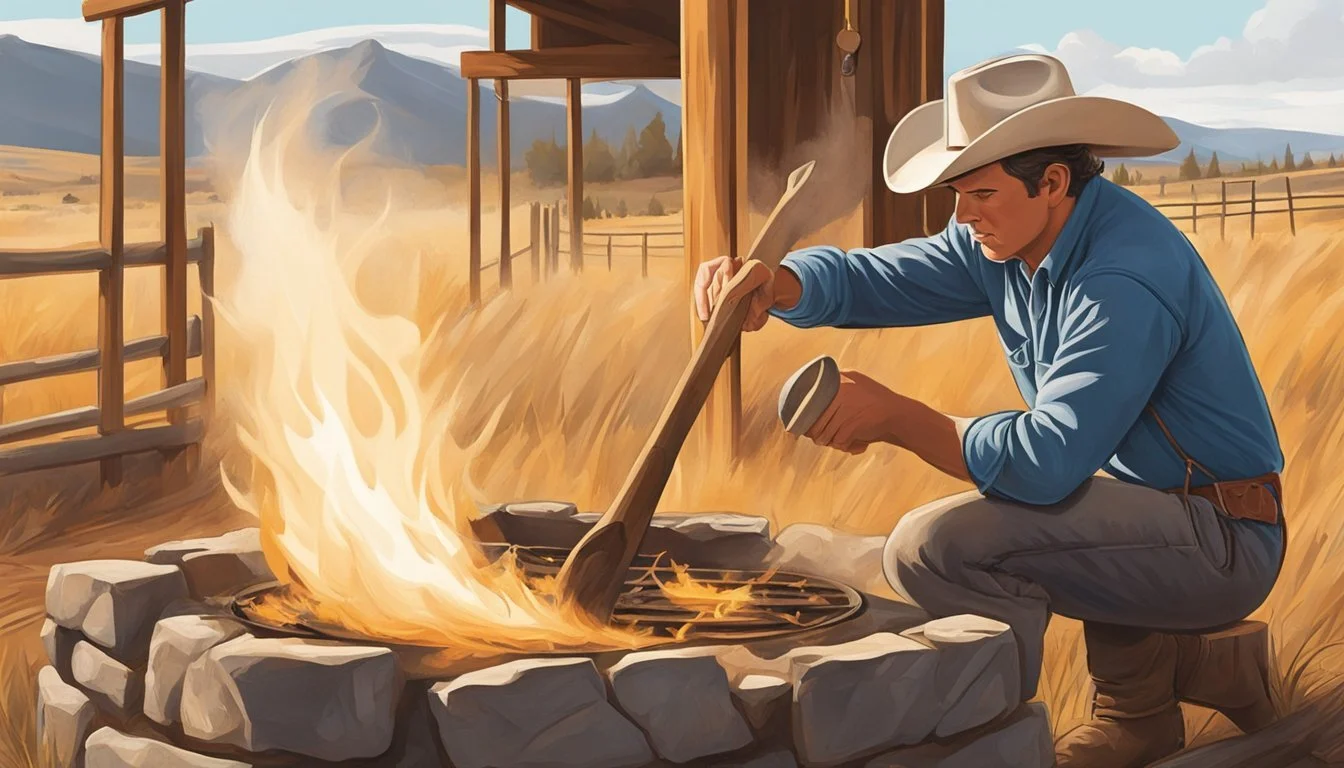The Tradition of Cattle Branding
From Ancient Rituals to Contemporary Methods
Cattle branding has stood the test of time as a method for identifying and proving ownership of livestock, particularly cattle. This practice dates back to ancient civilizations, such as the Egyptians, and continues to hold significance in the agricultural industry today. The concept of branding involves searing a unique mark into the hide of an animal, traditionally using a hot iron. These marks are carefully designed to be identifiable and unique to each owner, serving as a deterrent against theft and a way to reclaim lost animals.
In the United States, the branding of cattle has evolved but still remains a crucial aspect of ranching culture. Brands are registered with state livestock agencies, ensuring that each is distinct and traceable. Branding events often become communal gatherings that reinforce social ties within the ranching community. Despite the advent of modern technologies such as electronic tagging, branding persists as a favored method of identification because of its permanence and the low likelihood of it being lost or altered.
The process and symbolism of cattle branding have largely remained unchanged, although the methods may have adapted to include more humane practices and considerations for animal welfare. While hot-iron branding is still prevalent, alternative methods like freeze branding are also employed. The brand itself, often consisting of letters, numbers, and symbols, not only signifies ownership but also becomes a mark of pride, tradition, and heritage associated with the land and the livestock that graze upon it.
Historical Context of Cattle Branding
Cattle branding has a storied history, spanning from ancient civilizations to the iconic cowboy era of the American West, and has been integral in livestock management and ownership identification.
Origins in Ancient Civilizations
Ancient Egyptians marked their livestock as early as 2700 BCE, evidenced by Egyptian tomb paintings. They used branding to signify ownership, a practice that was also adopted by the ancient Romans, who were known for their systematic approach to agriculture and animal husbandry.
Spanish Influence and Vaquero Tradition
In the late 16th century, Hernán Cortés introduced cattle to the New World, bringing with him the vaquero tradition of livestock management. This practice was the predecessor to the American cowboy heritage. The Spanish influence solidified branding as a widespread method for identifying cattle across the sprawling ranches of the Americas, particularly in what is now Mexico and the southwestern United States.
Cattle Branding in the American West
With the expansion into the American West, branding became paramount for ranchers to claim and safeguard their herds. The American Cowboy Gallery highlights branding as part of the cowboy legacy, symbolizing both the rugged individualism and the community nature of ranching in states like New Mexico, where brands were registered and often displayed like badges of honor.
Cattle Branding Techniques
The diversity of cattle branding techniques spans from traditional methods to modern alternatives, each with its unique tools and processes.
Traditional Hot Branding
Traditional hot branding involves heating a metal branding iron in a fire or with an electric heating element to a temperature sufficient to scorch the hair and outer layer of the skin, creating a permanent mark. This method, referred to as fire branding or hot-iron branding, is still widely used due to its durability and cost-effectiveness. Two primary types of hot branding irons are used: standard and electric branding irons.
Standard Branding Irons: Heated over open flames until they reach the necessary temperature.
Electric Branding Irons: Heated to a consistent temperature using electricity, offering more control.
The cattle are typically restrained in a squeeze chute during the branding process to ensure safety and precision. Hot branding is fast, but the welfare of the animals must be a consideration, with ongoing debates about the impact on the cattle.
Alternative Methods: Freeze Branding and Ear Tags
Alternative branding techniques have been developed with animal welfare and identification ease in mind. Freeze branding uses branding irons cooled to extremely low temperatures with liquid nitrogen. This method doesn't burn the skin but instead alters the pigment-producing hair cells, causing the hair to grow in white or depigmented, which can be easier to read on darker animals.
Ear tags and ear tattoos are non-invasive identification methods. Ear tags are pieces of plastic or metal with identification marks clipped onto the ear. Ear tattoos involve permanent ink marks inside the ear. These methods are generally considered more humane and cause less stress to the animals.
Technological Advances in Livestock Identification
Technological solutions for cattle identification are becoming more accessible, offering methods that are both animal-friendly and efficient. Microchips are one such technology, allowing for quick electronic identification of individual animals through a unique ID. Implanted under the skin, usually in the ear, microchips can be read with a scanner, simplifying record-keeping and tracking.
As these technologies advance, they pave the way for more sophisticated tracking and management systems that can enhance the traceability and health monitoring of cattle herds.
The Branding Process
The act of branding involves marking livestock, primarily cattle, with a distinct symbol to assert ownership. This process commences with the design of a brand, typically a combination of letters, numbers, and simple shapes, which is unique to each ranching operation.
For the branding of a calf, ranch hands ensure the procedure is as safe and efficient as possible. The calf is guided into a squeeze chute, a device that secures the animal to minimize movement and stress. The well-being of the animal is paramount, and experienced ranch hands work swiftly to reduce the duration of discomfort.
Once the calf is restrained, a branding iron, previously heated to the necessary temperature, is applied to the animal's hide, most commonly on the hip area. The heat causes a change in the pigmentation of the hide, creating a permanent mark.
Safety Measures: Ranch hands wear protective gear and adhere to safety protocols to prevent injuries to both the animals and themselves.
Additional Identification: Some ranchers also employ ear tattoos as an additional form of identification for their cattle.
The branding process has evolved from its historical roots to accommodate modern considerations such as animal welfare and identification efficacy. Branding serves not just a functional purpose in marking livestock, but also a ceremonial one, often bringing together communities of ranchers in what has become a traditional activity in the agricultural calendar.
Management and Legal Aspects
In the context of cattle ranching, management involves the orderly recording and use of cattle brands, which are pivotal for identification and legal purposes. Lawful claim to cattle, market operations, and theft prevention are heavily contingent upon proper brand registration and systematic brand inspections.
Brand Registration and Documentation
In the United States, the legal ownership of cattle is often established through brand registration. Ranchers must register their unique brand symbols with state agricultural or livestock agencies to gain exclusive rights. Brand registration is a crucial step that ensures a brand's uniqueness, avoiding potential conflicts or legal disputes. Documentation typically includes:
Details of the Brand: The symbol, character, or design of the brand.
Location on the Cattle: Specific area(s) of the animal where the brand is applied.
Owner Information: Contact information and identification of the ranch or owner.
The registration process serves as a public record that links cattle to their rightful owners, facilitating sales and transfers in the market.
Brand Inspection and Cattle Theft Prevention
Brand inspections are mandatory procedures in many states prior to the sale, transport, or slaughter of cattle. Inspectors scrutinize the brands to confirm ownership, ensuring that the cattle have not been acquired through illicit means, such as cattle rustling. This age-old practice of cattle theft still affects ranchers today; regular inspections serve as a deterrent and a means of prevention.
Key aspects of brand inspection include:
Verification of Ownership: Comparing the brand on cattle against official records.
Theft Investigation: Inspectors may also investigate claims of stolen cattle and aid in their recovery.
Market Transparency: Brand inspections ensure that all cattle transactions are transparent and lawful, maintaining the integrity of the cattle market.
The regulation of branding, coupled with brand inspection, plays a fundamental role in the management of cattle, serving both as a method of identification and as a legal instrument to protect ranchers from the loss of livestock due to theft.
Social and Cultural Significance
Cattle branding has been more than a method to identify livestock ownership; it embodies the rich cultural fabric of ranching communities and the enduring cowboy lifestyle in America.
Ranching Communities and Cowboy Heritage
Within ranching communities, branding is a practice steeped in tradition, serving as a communal ritual and a rite of passage for many young cowboys. Cowboy gatherings, known as brandings, are social events where ranchers and neighbors converge to mark new calves with their unique brands. These events often include shared meals, storytelling, and the passing down of skills. They highlight the community's cohesion, with everyone participating, from the most seasoned ranchers to apprentices.
The figure of the cowboy is intrinsically linked to the American identity—conjuring images of freedom, resilience, and a connection to the land. Branding cattle has been a significant part of this legacy, symbolizing the cowboys' stewardship over their herds. Historically, branding also served as a legal tool against cattle rustlers, ensuring that the at-times lawless expanses of ranch land had a semblance of order.
The Legacy of Cattle Brands
Over time, the simple marks made by a branding iron have transcended their practical purpose and become part of a larger cultural legacy. Brands often carry deep meanings, symbolizing family history, values, and the pride of a ranch's lineage. Here are some ways brands have contributed to the legacy:
Tributes: Many brands serve as tributes to families, carrying on the names and icons of generations.
Ranchers' Pride: They represent a rancher's pride, with distinctive designs carefully chosen and often registered as trademarks.
Preservation Efforts: Efforts to catalog and preserve historic cattle brands have showcased the commitment of the ranching community to honor its roots.
Iconography: The designs are a rich source of iconography, with books and other media often celebrating the artistry and creativity behind each brand.
The branding traditions, though modernized, remain central to America's narrative, illustrating a unique bond between ranchers, their cattle, and the land they cultivate.
Current Trends and Future of Branding
As the world of livestock management continues to evolve, technologies enhance branding procedures and foster ethical considerations regarding animal welfare.
Technological Innovations in Livestock Management
The practice of cattle branding has seen significant shifts with the integration of technology. Traditional hot iron branding is now often supplemented or replaced by more modern methods:
Freeze Branding: It involves the application of liquid nitrogen or a similarly cold agent to a branding iron, which, when applied to the livestock's hide, alters the pigmentation to create a visible mark.
Electronic Identification (EID): Use of microchips and RFID tags offers a high-tech alternative for identifying and tracking animals. These devices store data that can be scanned and used in herd management systems.
Tagging: Ear tags can offer visual or electronic means to identify and track livestock. Tags are often color-coded or printed with specific symbols and numbers to differentiate one animal from another.
These advancements enable more accurate monitoring of herd health, efficient inventory management, and streamlined data collection.
Ethical Considerations and Animal Welfare
The transition towards more humane branding practices is reflective of a broader concern for the welfare of animals within the livestock industry:
Pain Mitigation: Contemporary practices include methods to reduce stress and pain associated with branding, such as the use of local anesthetics.
Regulations: There are increasing regulations focused on ensuring ethical treatment during the marking of livestock, including branding and tagging practices.
Public Perception: As consumer awareness rises, there is a growing insistence on humane treatment of livestock, which influences ranchers and farmers to adopt practices that are considerate of animal welfare.
These measures demonstrate an investment in benevolent livestock management and showcase the livestock industry's response to societal concerns.
Conclusion
The practice of cattle branding, with centuries of history, remains an essential aspect of cattle ranching today. It serves not only as a means to deter theft but also as a way to manage and identify livestock. Modern branding integrates both traditional techniques and contemporary technology, reflecting the industry's adaptation over time.
In today's operations, the welfare of the animals is given greater consideration, with methods such as freeze-branding and tattooing being employed alongside hot-iron branding as alternatives. As the industry moves forward, it is likely to see further advancements in identification techniques, such as electronic tagging, which can offer detailed information about each animal.
The symbol of the cattle brand has also transcended its origins, becoming a part of the branding conversation in corporate marketing. It signifies quality, ownership, and heritage—a concept that is universal across various fields. The cattle brand, therefore, is more than a mark on the hide; it is a symbol of evolution, identity, and tradition within the ranching industry.
Ranchers and agriculturalists continue to hold branding as an integral aspect of their trade while staying attuned to new developments. This balance between honoring tradition and embracing innovation signifies the resilience and dynamic nature of the ranching culture.




